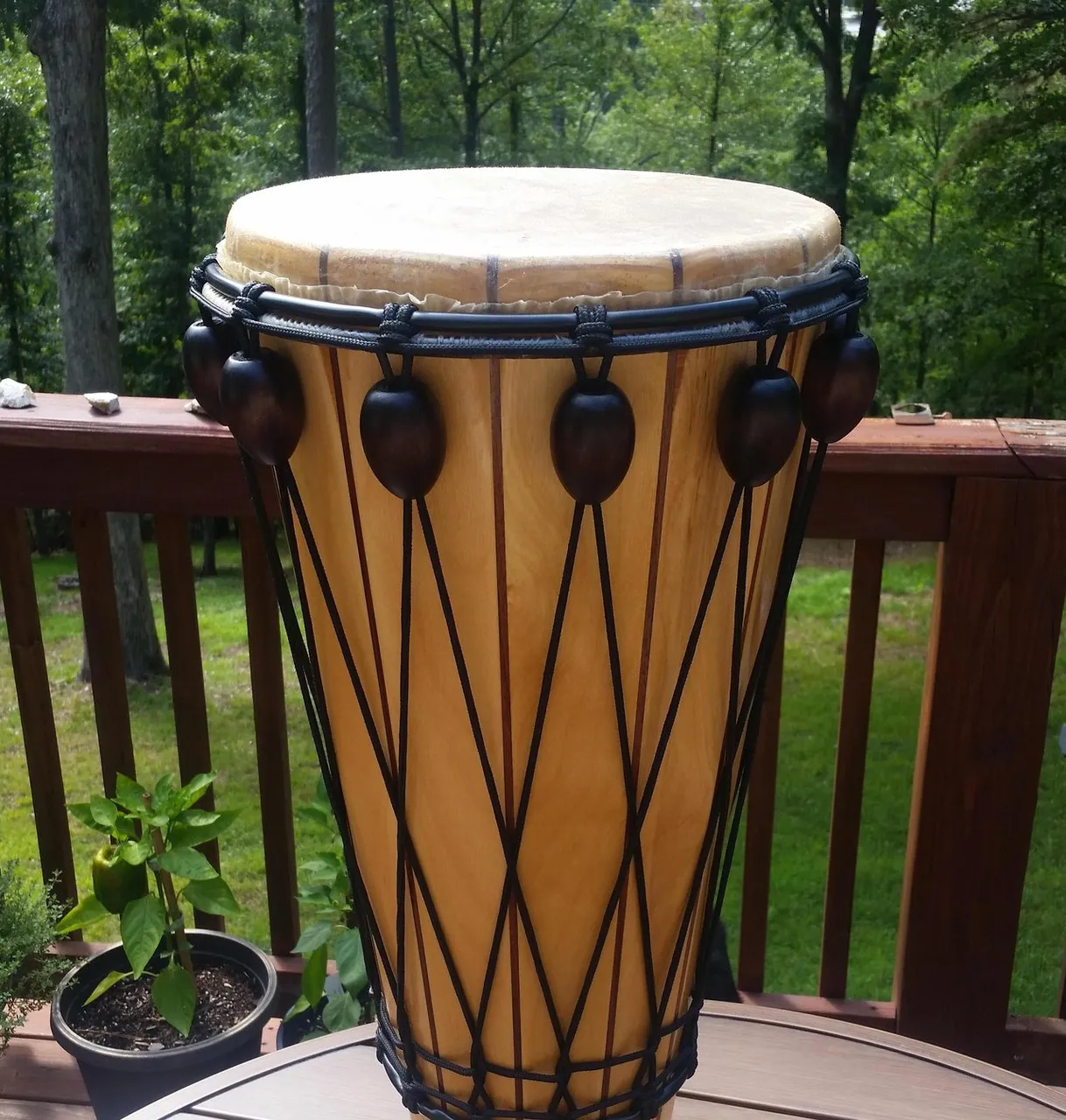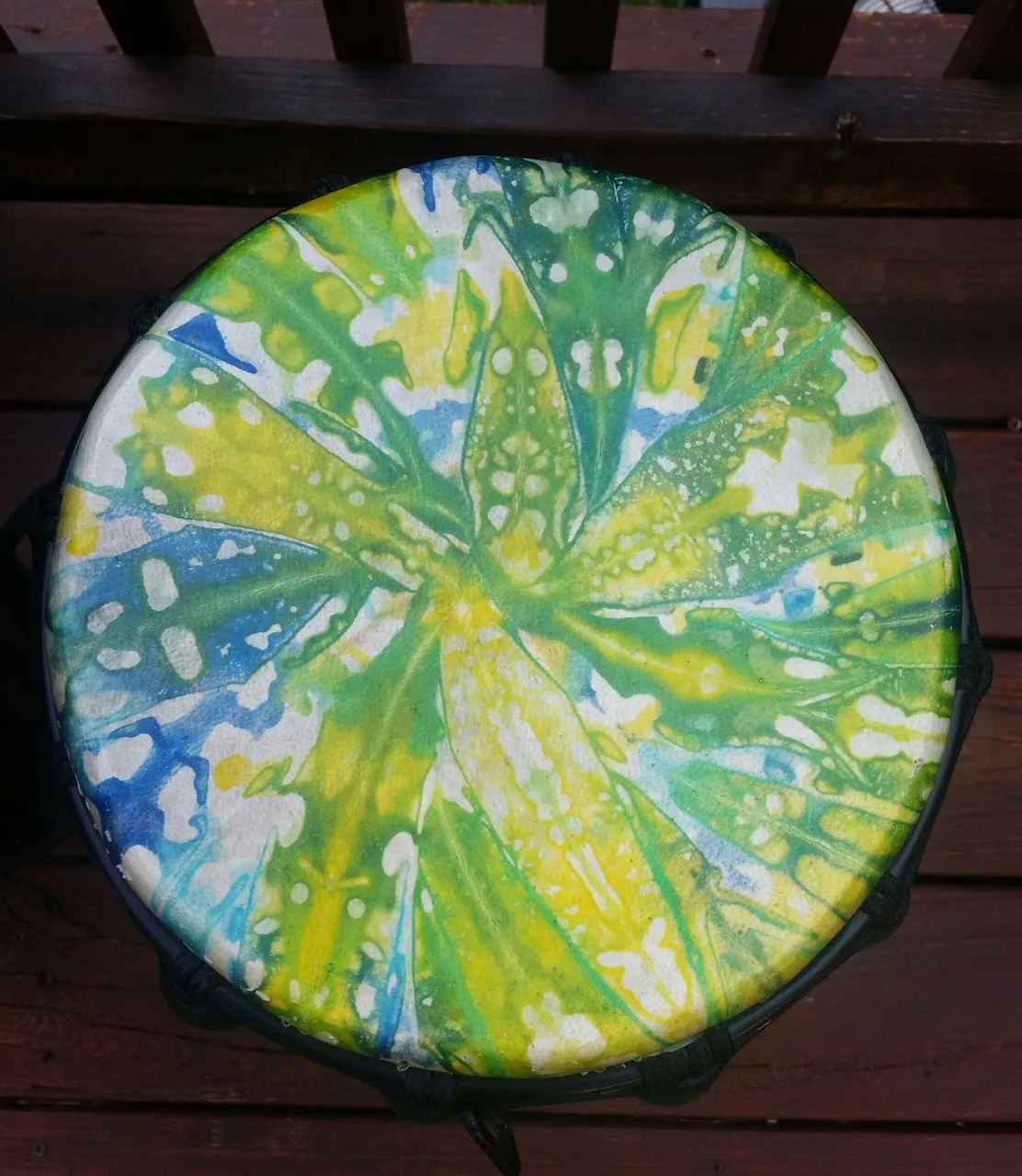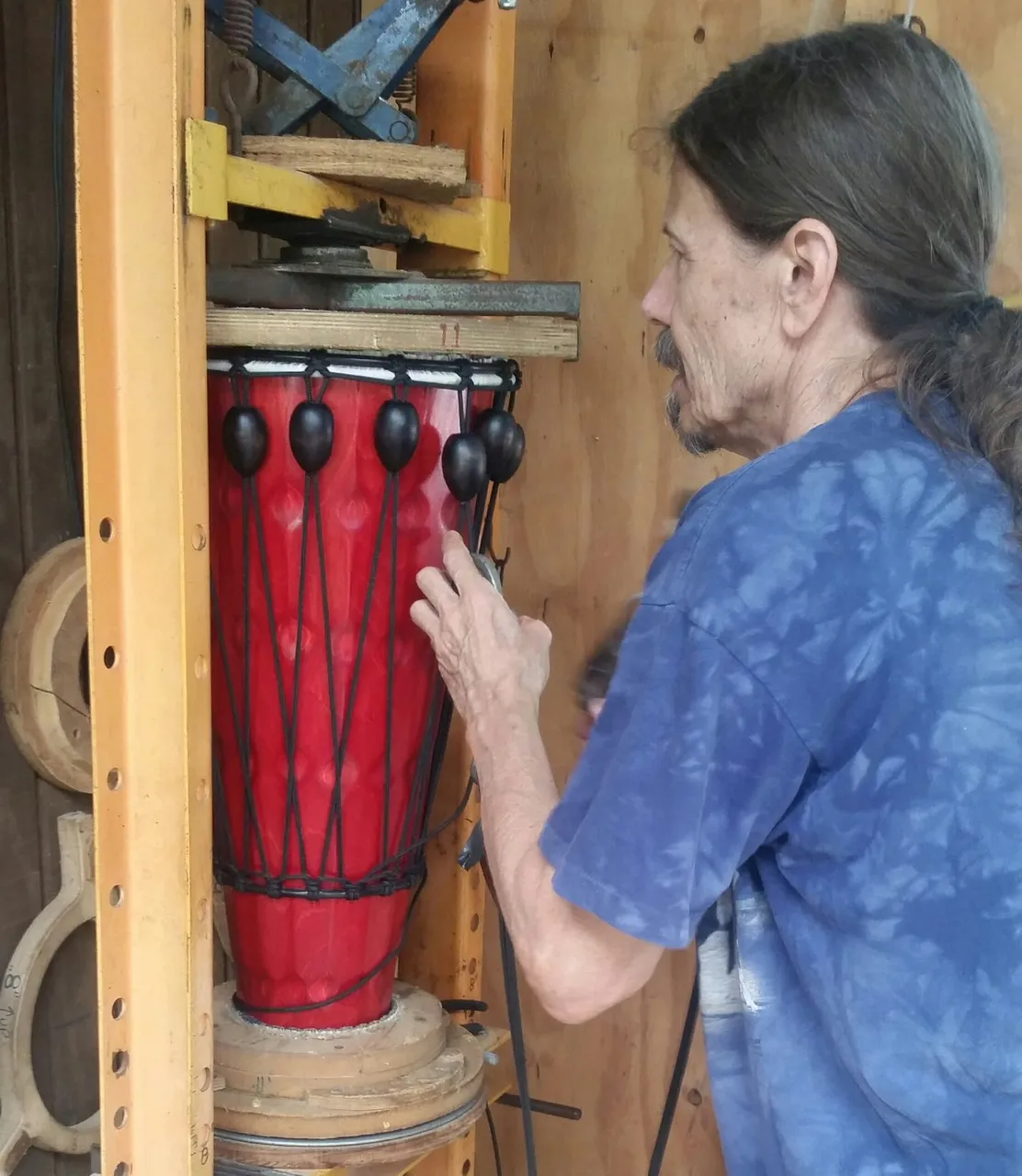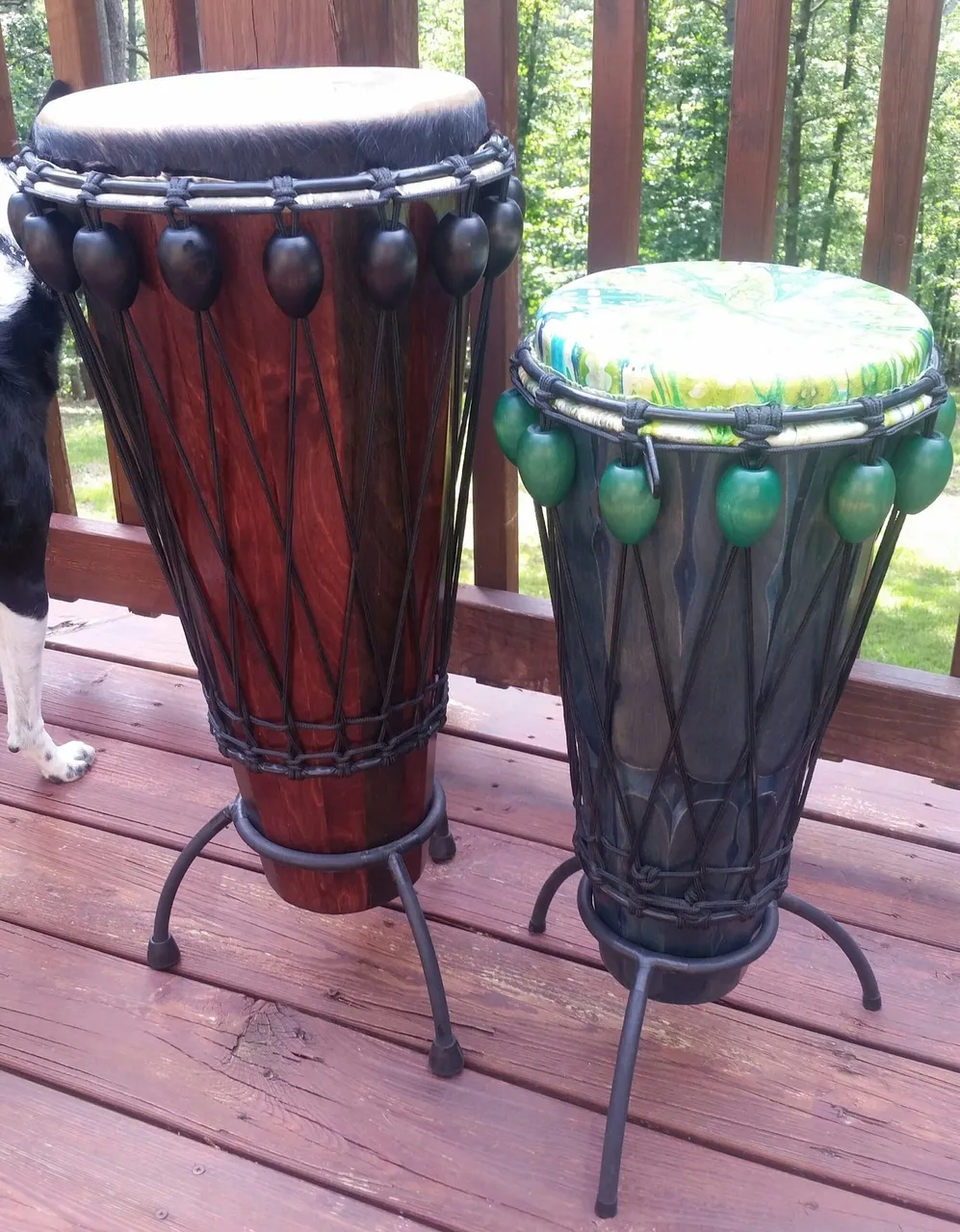I haven't been on Steemit this week very much because I have been in a woodworking shop nestled by Beaver Lake in the Ozark Mountains making tunable drums with a master drum maker. These instruments are playable art - no two ways about it. Doug Powell started building these drums back in 1992, and this week he took the time and patience to let me apprentice in his shop and learn how to craft these very playable pieces of art.
 A handcrafted, tunable Ashiko drum that I made this week
A handcrafted, tunable Ashiko drum that I made this week
I had my first contact with these drums in November of 2013. I've been a drummer for most of my life, and when we found out there were handmade drums in the town where we eloped, we had to find out more while we were visiting for our anniversary. We had no idea the level of craftsmanship we would witness. During that visit I bought one of Doug's drums. A year later we came back another anniversary visit and I bought another one. I guess you could call me a believer in the product. I definitely had no idea I would be actually in the shop making these drums a little over a year after moving to Eureka Springs.
The egg--shaped pieces you see on the strings are the tuners. Sliding the tuners up down toward the bottom of the drum cinches the animal-skin head tighter, raising the pitch. These ashikos can be played from the stand (which is also fabricated in the shop) or held by a strap (yup. that's made in-house too) for playing while standing.
 A glued and sanded drum shell
A glued and sanded drum shell
Our process started on Monday by cutting the staves for the drums out of multi-ply birch and gluing them together. Once the joints were set it was time for sanding. A lot of sanding. Once the drum shells were sanded down, we finish sanded them. Did I mention there was a LOT of sanding? Once all rounds of sanding were done the drums were finished. We left some natural, like the first picture, while we dyed the shells of others.
The amount of variation that Doug has created in this product is astounding. His techniques enable him to make drums with a multitude of colors and finishes, with shells that allow the carving of designs and details that really make the drums pop (pun intended). The combinations of the different types of skin heads, the finishes that can be applied to the drums, the color combinations between shell and tuners makes each drum, even though it may be the same size as the previous, to be a unique creation by a master craftsman.
Once the drums had their finishes applied we made the heads. Some heads we left natural, while other heads received dyes, including tie dyes.
 A tie dyed head
A tie dyed head The skins were soaked to soften them, then fed through a series of metal rings to create a point of retention until the head dried and held it's shape better. The heads were secured to the shells using the rings (also fabricated in the shop) and a series of knots and lacing to serve as the tension for the head itself. It was not uncommon for too much tension to be exerted one side of the drum, and the rings would pop off, releasing the skin, and we would have to start over. Most of these occurrences were my fault, and I still praise Doug's patience in teaching me how this works. Dozens of feet of line are used to lace the drum in a pattern that took me a couple of days to become comfortable with.
 Doug pulling a drum to the correct tension
Doug pulling a drum to the correct tension
Once we had laced the drums and the head had plenty of time to dry so as to not pull out when applying the tension necessary for the proper sound, we pulled the lacing tight with a series of pulleys, removing the slack and tuning the drums up to playing tension, tested the sound (my favorite part), then tied off the rest of the line with a technique known as the "Mali Weave". When the tuning is done the drum is placed in a three-legged stand and it's strap is attached, then it is assigned a number and the inside of the shell is signed, numbered and dated. From there they are shipped to customers all around the country.
The red drum pictured was actually sent in by a customer to be re-headed after something punctured the original head, rendering it useless.
I didn't know where this week was going to lead, other than the endgame of a finished product. Over the course of the last 5 days I found out how the drums that I fell in love with made, actually did the making, and was honored to have been tutored by the inventor himself. My hope was to go in, learn some things, hopefully not break too much stuff, and not make Doug upset with my woodworking incompetence. However, I guess I did better than expected, because there are already plans for me to return to the drum shop for further tutelage.
It is experiences like this that make life awesome.
 The two drums that started it all
The two drums that started it all
If you like these drums, I encourage you to visit
New World Drums on the interwebs. You can see more versions of these works of art, and call order your very own.
Part 2 of Handcrafting Drums in the Ozark Mountains is now available.
If you liked this post bebop on over to my blog and check out my other posts. Keep on steemin!





